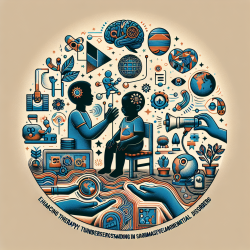Key Findings
The study by Benz et al. identified five main themes using a "shopping for shoes" metaphor to describe the functionality of telepractice:
- A Shoe for Every Foot: Telepractice's effectiveness varies among individuals, similar to how different shoes fit different feet. It may be perfect for some children and impractical for others.
- Planned Purchases: Proper preparation and resources are crucial for successful telepractice sessions, akin to planning a shoe purchase.
- Shoe on the Other Foot: Telepractice and in-person sessions offer distinct benefits and challenges, much like left and right shoes.
- You Need Both Shoes: A hybrid model combining telepractice and in-person sessions is optimal, similar to needing both left and right shoes for comfort and function.
- Help Choosing Their Shoes: Providers play a crucial role in guiding clients to choose telepractice or in-person sessions based on their needs, similar to seeking advice when buying shoes.
Practical Tips for Practitioners
Based on these findings, here are some practical tips for practitioners to enhance their telepractice skills:
- Assess Individual Needs: Just as every foot is different, assess each child's unique needs and circumstances to determine if telepractice is the right fit.
- Prepare Thoroughly: Ensure that both you and the families have the necessary resources and preparation for telepractice sessions. This may include providing technical support and ensuring access to the required devices and internet connection.
- Set Realistic Expectations: Communicate the distinct benefits and limitations of telepractice to families. Setting realistic expectations can help in achieving better outcomes.
- Embrace a Hybrid Model: Whenever possible, combine telepractice with in-person sessions to leverage the strengths of both delivery modes.
- Support and Empower Families: Provide guidance and support to families to help them become active participants in the therapy process, enhancing the overall effectiveness of telepractice.
Encouraging Further Research
While the study provides valuable insights, it also highlights the need for further research to fully understand the long-term effectiveness and best practices of telepractice. Practitioners are encouraged to stay updated with the latest research and continuously seek ways to improve their telepractice skills.
To read the original research paper, please follow this link: A qualitative study assessing allied health provider perceptions of telepractice functionality in therapy delivery for people with disability.










